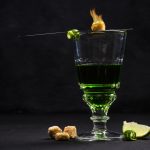Types of Red Wine to Choose From
When winter hits, there’s nothing like a hearty bottle of red wine to provide a rich and comforting taste. Whether it’s for a family dinner, a romantic evening in, or simply treating yourself after a long day, you can easily turn your night into an experience. However, choosing the right bottle of red wine for your evening can be daunting with the array of types available.
We’re here to help! Here are some of our top picks for bottles that will perfectly complete your winter table:
- Cabernet Sauvignon is a classic choice for most wine lovers, thanks to its rich and bold flavor.
- Merlot is medium-bodied and showcases flavors of spiced plum and cherries.
- Shiraz/Syrah has complex flavors that range from dark fruits and pepper to floral aromas such as lavender.
- Pinot Noir is a versatile wine known as the best for winter due to its unique flavor and pairs well with hearty, warming dishes.
No matter your preference, there’s something here to suit every palate!
Pairing Red Wine With Winter Dishes
As the days get shorter and the temperatures drop, a bottle of red wine is the perfect accompaniment for your wintertime dinner table. Whether you’re entertaining guests or simply enjoying a cozy night in with your family, a bottle of red can add a finishing touch of warmth to any meal.
Red wine is versatile enough to pair with any kind of winter cuisine. Hearty dishes like roasted meats, sautéed vegetables, and stews all pair nicely with a glass of Pinot Noir or Shiraz. Rich desserts such as chocolate cake or strawberry cheesecake will complement Pink Moscato wine with its sweet berry notes.
The key to pairing your red wine correctly is to match the body and intensity of the flavor of the wine with that of your food. Light-bodied wines go wonderfully with light dishes like pasta and soups, while full-bodied Cabernet Sauvignon goes well with richer dishes like beef stroganoff or gruyere cheese quiche.
Whether you’re looking for an excellent accompaniment to an elegant dinner party or just something special to share over family game night, pouring a glass of red can enhance any winter meal!
Tips for Storing and Serving Red Wine
With the right bottle of red on hand, your winter table is set to be a memorable event. But there are few tricks to storing and serving red wine that you should know.
Storing Red Wine
One mistake many people make is not storing their red wine in the right place. Red wines should be stored in areas with consistent temperature and humidity, between 45°F and 65°F, and away from direct sunlight. You’ll want to keep them in the coolest room in your house, or even better, an underground cellar if you’re lucky enough to have one!
Serving Temperature
When serving red wine, it’s important to serve at the right temperature. A full-bodied red should be served at room temperature (68-70°F) and a lighter varietal should be served slightly cooler (60-64°F). Don’t worry too much about exact temperatures though—drinking your favorite red at a slightly colder or warmer temperature than suggested will not ruin your night!
The perfect winter table isn’t complete without a perfectly paired bottle of red—so take care of your prized bottle with these tips next time you host an event:
- Store red wine in the coolest place in your house
- Serve full-bodied wines at room temperature (68-70°F)
- Serve lighter varietals slightly cooler (60-64°F)
Aging Red Wines for Maximum Enjoyment
It’s no secret that aging red wines can make them even more delicious. By allowing the tannins in the wine to mellow and meld together, you create more complex flavors, a smoother finish, and an overall better experience. And what better time than winter to start sipping your favorite aged red?
Although there’s no one right answer, most oenophiles agree that there are three general classifications of red wines (light/youthful, medium-bodied/maturing, and full-bodied/aged) that determine how long you should age them.
Light Reds or Youthful Reds
Light reds, such as Pinot Noir, are best consumed within a few years of bottling. The delicate fruit aromas don’t stand up well to long aging so it’s best to enjoy these young and fresh.
Medium- Bodied Reds or Wines for Maturing
Medium-bodied reds, like Merlot, tend to mellow with age so they should be aged for 2-7 years before drinking. During this time the wine will develop more complex flavors such as tobacco and earthy notes.
Full-Bodied Reds or Wines for Aging
Full-bodied reds like Cabernet Sauvignon and some Shiraz should be cellared for 5+ years before drinking in order to achieve maximum enjoyment. These wines often become smoother during their aging process and also take on a deeper hue when they are at their peak flavor profile.
With all that knowledge in hand now there’s nothing stopping you from perfecting your winter table with
How to Tell if a Bottle Is Going Bad
As your group of friends is perusing the wine selection for the evening, you might be wondering how to tell which bottles are going bad. Before you settle on one and make a purchase, follow these tips!
Appearance and smell
If the cork smells of mold or has residue on it, you should pass on that bottle. Also, if the wine has sediment or chunks floating around in it, that’s an indication that the bottle was not stored correctly. You’ll want to avoid this one too.
Taste test
Once you’ve opened the bottle, take a small sip. If it tastes sour or off-putting in any way, do not drink it. A good red should taste fruity and be pleasantly sweet and tart at the same time—anything else means it’s been open too long or wasn’t properly stored and needs to go back on the shelf.
To make sure your bottle of red is still good before you buy it:
- Make sure there’s no residue on the cork itself
- Check for sediment in the liquid
- Take a small sip and make sure there’s no unpleasant taste
Making the Most of Your Bottle of Red Wine
We all know just how special wine can make an occasion. And if you want to really wow your guests this winter, a bottle of red is the way to go.
Here are our top tips for making the most of your bottle of red:
Decanting
Decanting a red helps aerate the wine and bring out its nuances. We recommend doing this about half an hour to 45 minutes before you plan to serve it so that the sediment has time to settle.
Serving Temperature
The perfect temperature for serving red wine is anywhere from 55°F-65°F. The best way to get that perfect temperature is to let your bottle sit in a cool place for about half an hour to 45 minutes prior to serving; alternatively, you could pop it in the refrigerator for 10-15 minutes.
Glassware
Your choice of glassware can make a big difference in terms of the overall aroma, flavor and texture when tasting your bottle of red. We suggest using big bowls with wider mouths, like Burgundy glasses or Bordeaux glasses — these will help oxygenate your wine and bring out its subtle and complex tastes.
So don’t forget—decanting, serving temperature, and glassware are key elements when it comes to getting the most out of any bottle of red this winter!
And there you have it! Whether you’re sipping a glass of Merlot or indulging in a Cabernet Sauvignon, a bottle of red wine is the perfect accompaniment for your winter table. Red wines have an array of flavor profiles, depending on the grape, country of origin, and the producer and winemaker.
Red wines are incredibly diverse and can pair well with different dishes. Also, they’re complex enough to stimulate conversation at the table. With the right bottle of wine, you can create a memorable evening with family and friends. So, don’t pull out just any bottle of red—pour yourself a glass, take a sip, and feel the warmth of the season!






